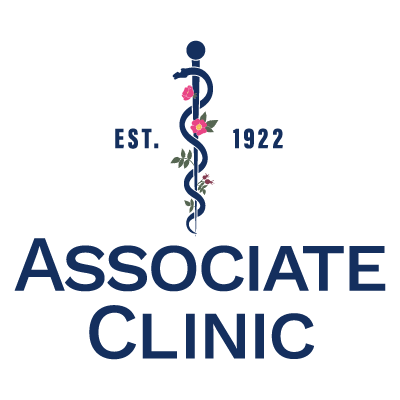Our History
1922
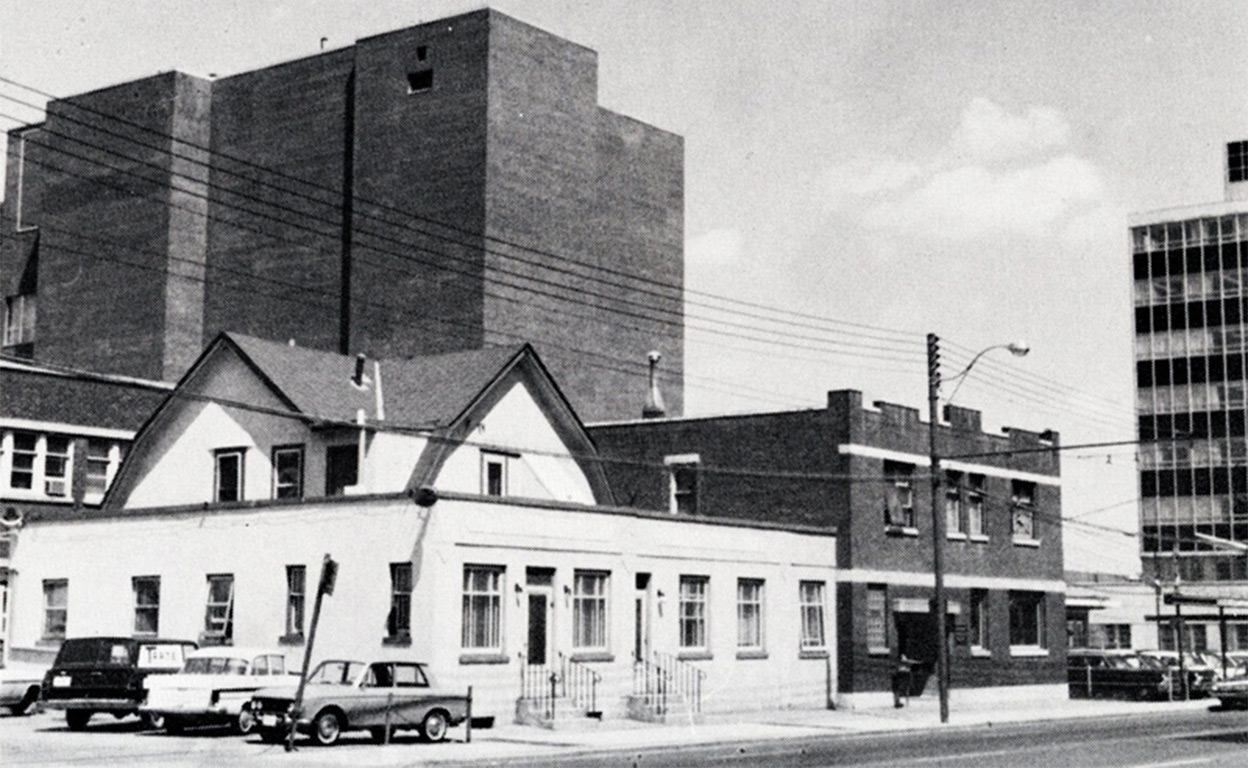
In 1922, under the direction of Dr. Daniel Stewart Macnab, Associate Physicians and Surgeons was formed.
The development of this clinic was not established on a whim but through years of careful planning and research. Dr. Macnab visited successful clinics across North America to learn what blueprint was required to make a good clinic work. He then enlisted four well-established physicians to join him: Dr. George Douglass Stanley, Dr. Albert Earl Aikenhead, Dr. William Ayer Lincoln, and Dr. James Scovil Murray. Before this, all had practiced in the same office building independently. Dr. Macnab was a qualified surgical specialist, while the others were general practitioners.
Dr. Stanley wrote of Dr. Macnab,
- "Unquestionably, his most significant and most worthwhile task was the assembling of a group of capable, middle-aged medical and surgical practitioners on December 1, 1922, to organize his dream and then keeping together enough of them, along with a succession of competent additional physicians, to maintain and promote that which has grown during the process of years to be the [Calgary] Associate Clinic of today.”

1922

Dr. Stanley wrote of Dr. Macnab,
- "Unquestionably, his most significant and most worthwhile task was the assembling of a group of capable, middle-aged medical and surgical practitioners on December 1, 1922, to organize his dream and then keeping together enough of them, along with a succession of competent additional physicians, to maintain and promote that which has grown during the process of years to be the [Calgary] Associate Clinic of today.”

1928
In 1928, the group decided that they were firmly established and would expand.
They bought the old Central Methodist Church manse at 214 6 Avenue, and in the fall of 1929, the manse was removed to the rear of the lot, and a brick front facing 6th Avenue was constructed. It was during this period that the name was changed to Calgary Associate Clinic, and the first dispensary was opened in the basement by Mr. Dorland, the business manager, who had previously been a pharmacist.
Dr. Macnab felt that the only way that the practice would be successful was through “a feeling of mutual respect and a spirit of loyalty to one another.” To establish this, Dr. Macnab introduced weekly luncheons where physicians would gather to discuss their work or deliver papers on various topics; even guest lecturers were invited. The clinic would set aside money to send its members to various conferences and courses, and these meetings acted as a built-in educational system since any member returning from a course or conference would report on what they had learned. The gatherings proved a constant source of learning and a desire to keep up-to-date with current medical knowledge and practice.
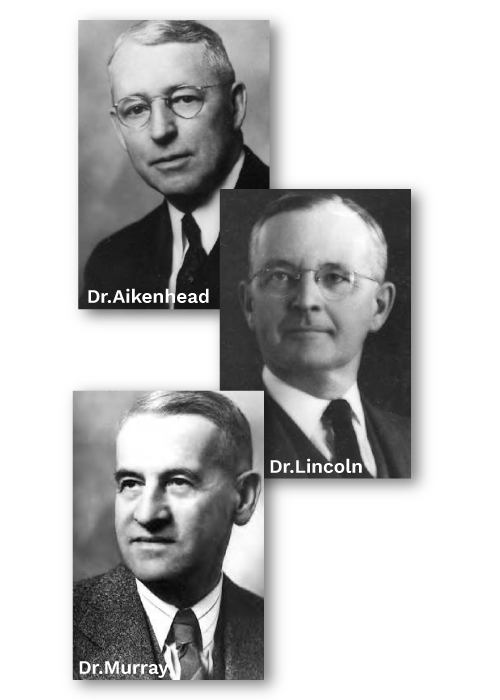
1928
In 1928, the group decided that they were firmly established and would expand. They bought the old Central Methodist Church manse at 214 6 Avenue, and in the fall of 1929, the manse was removed to the rear of the lot, and a brick front facing 6th Avenue was constructed. It was during this period that the name was changed to Calgary Associate Clinic, and the first dispensary was opened in the basement by Mr. Dorland, the business manager, who had previously been a pharmacist.
Dr. Macnab felt that the only way that the practice would be successful was through “a feeling of mutual respect and a spirit of loyalty to one another.” To establish this, Dr. Macnab introduced weekly luncheons where physicians would gather to discuss their work or deliver papers on various topics; even guest lecturers were invited. The clinic would set aside money to send its members to various conferences and courses, and these meetings acted as a built-in educational system since any member returning from a course or conference would report on what they had learned. The gatherings proved a constant source of learning and a desire to keep up-to-date with current medical knowledge and practice.

1930s/1949s
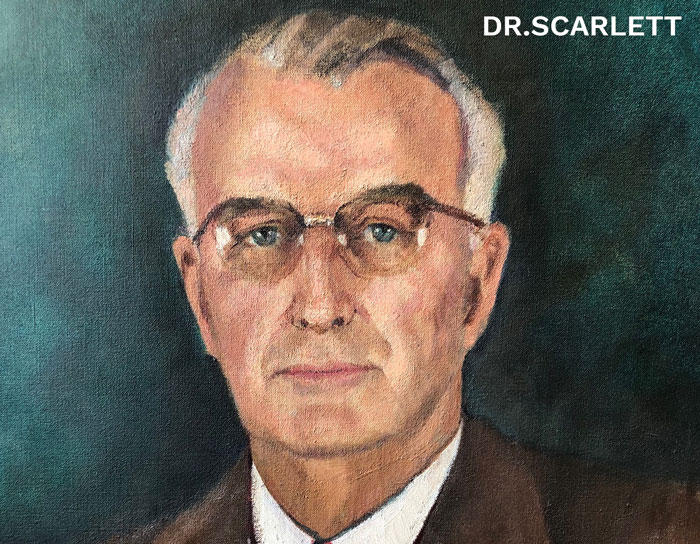
In addition to the luncheons and afternoon tea, which was served at 4 p.m. each day, in 1932, an additional monthly evening assembly was added at which papers devoted to medical history would be given.
Led by Dr. Scarlett, these were originally referred to as the “historical meetings” and later became known as the more formal “Historical Society” and led in turn to the publication of the Calgary Associate Clinic Historical Bulletin (CACHB).
Once per year, Dr. Scarlett would obtain a list of the oldest living physicians in Alberta and invite the oldest to speak at the Historical Society. The Clinic would pay for transportation and put the physician up in the Palliser Hotel. This invitation would provide these doctors with a platform to share their experiences in medicine and paint a historical picture of the practice of medicine in Alberta.
The Clinic began to work to recruit more specialists, such as a pediatrician, an obstetrician, and an internal medicine physician in 1930. The business manager, Mr. Sid Dorland, also a former pharmacist, opened a pharmacy in the clinic’s basement.
After the mid-1930s, the clinic began to expand rapidly. Macnab continued to hire physicians from Eastern Canada and outside of Canada deliberately. The clinic soon housed additional specialties, such as otolaryngology, surgery, genitourinary, thoracic surgery, and ophthalmology.
All of these were significant contributions to medical life in Alberta. Also notable was the Clinic working to bring to Calgary highly trained physicians in almost every specialty. It was often difficult to establish oneself in a new town, and the clinic would guarantee a steady income until they could become accepted. The clinic would also recruit many of their physicians from outside Alberta and often Canada, particularly in the 1930s and 1940s. In fact, many came from the Mayo Clinic, as Dr. Macnab, Dr. Stanley, and Dr. Scarlett had quite close personal relationships with the staff at Mayo.
The addition of these specialties led to an extreme lack of space. The average yearly patient registration had grown to 55,000. The original manse was demolished in 1939, and a significant addition with room for twenty physicians was built. The departments of dietetics and physical therapy were added, and the x-ray department expanded. There continued to be a pharmacy, which was run by graduate pharmacists. The laboratory, run by Dr. Fred Langton, pathologist, complete with an animal house full of rabbits and guinea pigs, continued to be an essential part of the association.
After 1940, many doctors left the clinic to serve in the Second World War. New doctors replaced those who left and remained even after the others returned. In total, approximately two hundred physicians were associated with the Associate Clinic at one time or another.
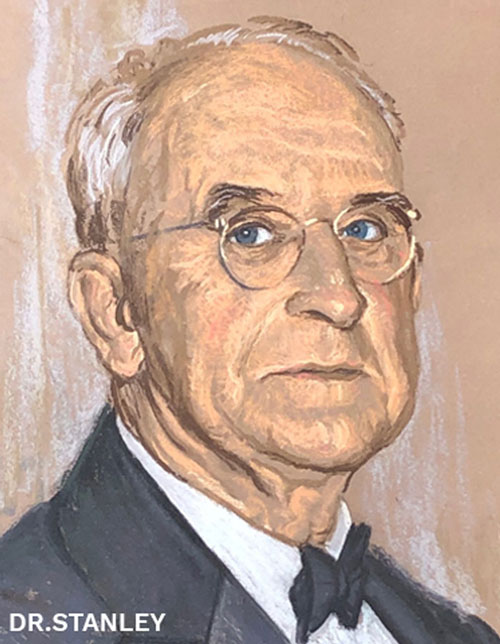
1930s/1949s

In addition to the luncheons and afternoon tea, which was served at 4 p.m. each day, in 1932, an additional monthly evening assembly was added at which papers devoted to medical history would be given. Led by Dr. Scarlett, these were originally referred to as the “historical meetings” and later became known as the more formal “Historical Society” and led in turn to the publication of the Calgary Associate Clinic Historical Bulletin (CACHB).
Once per year, Dr. Scarlett would obtain a list of the oldest living physicians in Alberta and invite the oldest to speak at the Historical Society. The Clinic would pay for transportation and put the physician up in the Palliser Hotel. This invitation would provide these doctors with a platform to share their experiences in medicine and paint a historical picture of the practice of medicine in Alberta.
The Clinic began to work to recruit more specialists, such as a pediatrician, an obstetrician, and an internal medicine physician in 1930. The business manager, Mr. Sid Dorland, also a former pharmacist, opened a pharmacy in the clinic’s basement.
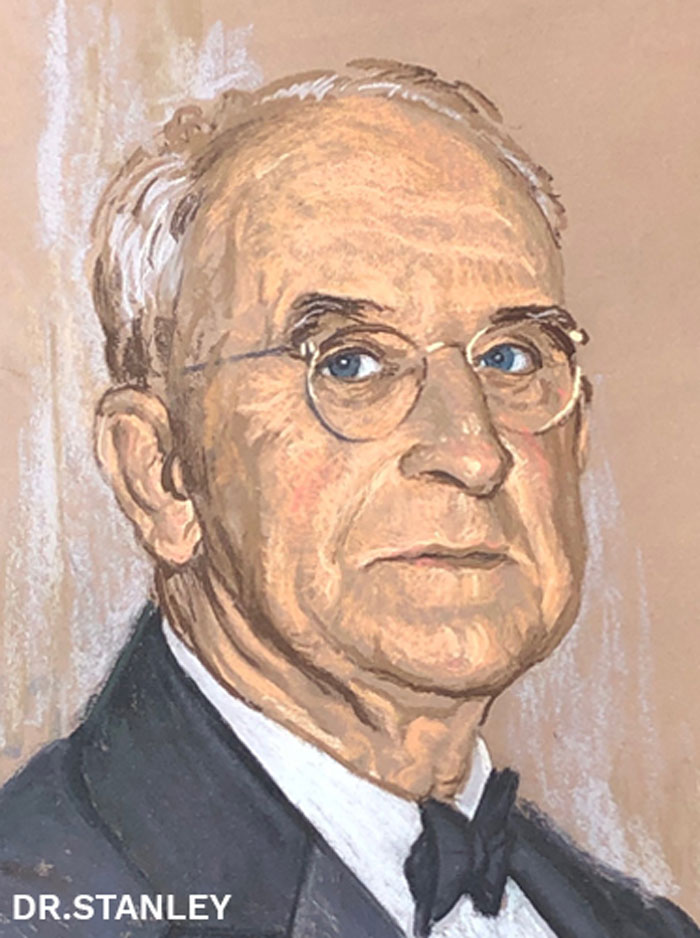
After the mid-1930s, the clinic began to expand rapidly. Macnab continued to hire physicians from Eastern Canada and outside of Canada deliberately. The clinic soon housed additional specialties, such as otolaryngology, surgery, genitourinary, thoracic surgery, and ophthalmology.
All of these were significant contributions to medical life in Alberta. Also notable was the Clinic working to bring to Calgary highly trained physicians in almost every specialty. It was often difficult to establish oneself in a new town, and the clinic would guarantee a steady income until they could become accepted. The clinic would also recruit many of their physicians from outside Alberta and often Canada, particularly in the 1930s and 1940s. In fact, many came from the Mayo Clinic, as Dr. Macnab, Dr. Stanley, and Dr. Scarlett had quite close personal relationships with the staff at Mayo.
The addition of these specialties led to an extreme lack of space. The average yearly patient registration had grown to 55,000. The original manse was demolished in 1939, and a significant addition with room for twenty physicians was built. The departments of dietetics and physical therapy were added, and the x-ray department expanded. There continued to be a pharmacy, which was run by graduate pharmacists. The laboratory, run by Dr. Fred Langton, pathologist, complete with an animal house full of rabbits and guinea pigs, continued to be an essential part of the association.
After 1940, many doctors left the clinic to serve in the Second World War. New doctors replaced those who left and remained even after the others returned. In total, approximately two hundred physicians were associated with the Associate Clinic at one time or another.
1960s - Current
Calgary Associate Clinic was responsible for the medical services for the Calgary branch of the University of Alberta (later the University of Calgary) from its inception until the 1960s.
The clinic even took care of the Calgary Stampeders until they developed their own facility. The clinic continued to maintain a close relationship with the Holy Cross Hospital. In fact, in 1960, a new heart-lung machine was purchased by the Clinic and given to the Holy Cross Hospital. This donation was described as a “medical milestone” and permitted surgeons to perform formerly impossible procedures.
By the 1980s, the Clinic looked remarkably different than the one established in 1922. The weekly meetings that were such an essential part of the clinic in those early years were no longer held, and much of the library had been donated to the University of Calgary Medical School. The laboratory was sold to Calgary Diagnostic Laboratories in 1979, and the x-ray was sold in 1986; however, both remained in the building.
In the early 1980s, with the expansion of downtown Calgary, the Clinic found itself suffocated with the construction of Bow Valley Square. The skyscrapers were actually built right against the four-story clinic and essentially closed off the side windows and rear entrance. Those in the clinic at the time wished to escape the chaos of downtown and decided to move to 1228 Kensington Road N.W.
In the new building, 46 physicians were practicing in the departments of family medicine, internal medicine, orthopedics, general surgery, otolaryngology, pediatrics, cardiology, and pediatric cardiology. Associate Clinic continued to be one of the largest group practices in Alberta.

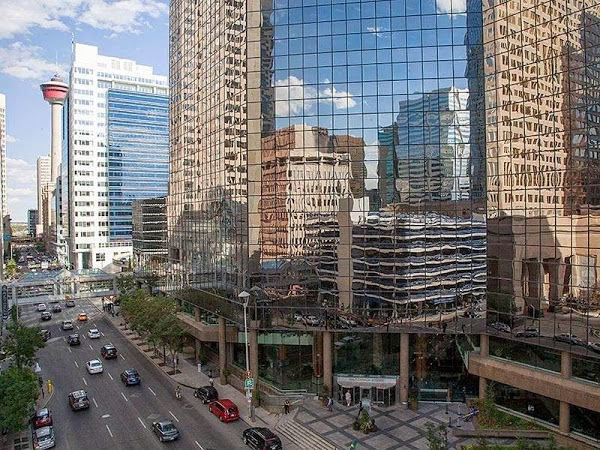
The construction of the Kensington building began just prior to the downturn in the Calgary economy and increasing interest rates. By the time the Clinic relocated in 1984, it was struggling to manage the ballooning mortgage costs associated with the development and significant negative equity on the property. That, combined with severe parking restrictions for patients trying to access the Clinic, resulted in a decision to sell the building. After renting from the new owners for several years, the Clinic moved back into downtown Calgary in 1994, establishing offices on the third floor of Gulf Canada Square on 9th Avenue S.W. where it remains to this day.
Associate Clinic continues to thrive, co-located in Gulf Canada Square with Calgary Laboratory Services, EFW Radiology and the Medicine Shoppe Pharmacy. Patients are able to access seamless medical services with the convenience of a central location and accessible, on-site parking.
The dream of Dr. Macnab came to fruition in a small city in Canada’s “wild west.” One wonders if Dr. Macnab had any inclination as to the longevity of the clinic as it celebrates 100 years in 2022. From its inception, through the Great Depression, World War II, and the recession in the 1980s, Calgary Associate Clinic maintained its purpose as an organization dedicated to providing the best healthcare possible for those in Calgary and the surrounding areas.
1960s - Current
Calgary Associate Clinic was responsible for the medical services for the Calgary branch of the University of Alberta (later the University of Calgary) from its inception until the 1960s. The clinic even took care of the Calgary Stampeders until they developed their own facility. The clinic continued to maintain a close relationship with the Holy Cross Hospital. In fact, in 1960, a new heart-lung machine was purchased by the Clinic and given to the Holy Cross Hospital. This donation was described as a “medical milestone” and permitted surgeons to perform formerly impossible procedures.
By the 1980s, the Clinic looked remarkably different than the one established in 1922. The weekly meetings that were such an essential part of the clinic in those early years were no longer held, and much of the library had been donated to the University of Calgary Medical School. The laboratory was sold to Calgary Diagnostic Laboratories in 1979, and the x-ray was sold in 1986; however, both remained in the building.
In the early 1980s, with the expansion of downtown Calgary, the Clinic found itself suffocated with the construction of Bow Valley Square. The skyscrapers were actually built right against the four-story clinic and essentially closed off the side windows and rear entrance. Those in the clinic at the time wished to escape the chaos of downtown and decided to move to 1228 Kensington Road N.W.

In the new building, 46 physicians were practicing in the departments of family medicine, internal medicine, orthopedics, general surgery, otolaryngology, pediatrics, cardiology, and pediatric cardiology. Associate Clinic continued to be one of the largest group practices in Alberta.
The construction of the Kensington building began just prior to the downturn in the Calgary economy and increasing interest rates. By the time the Clinic relocated in 1984, it was struggling to manage the ballooning mortgage costs associated with the development and significant negative equity on the property. That, combined with severe parking restrictions for patients trying to access the Clinic, resulted in a decision to sell the building. After renting from the new owners for several years, the Clinic moved back into downtown Calgary in 1994, establishing offices on the third floor of Gulf Canada Square on 9th Avenue S.W. where it remains to this day.
Associate Clinic continues to thrive, co-located in Gulf Canada Square with Calgary Laboratory Services, EFW Radiology and the Medicine Shoppe Pharmacy. Patients are able to access seamless medical services with the convenience of a central location and accessible, on-site parking.
The dream of Dr. Macnab came to fruition in a small city in Canada’s “wild west.” One wonders if Dr. Macnab had any inclination as to the longevity of the clinic as it celebrates 100 years in 2022. From its inception, through the Great Depression, World War II, and the recession in the 1980s, Calgary Associate Clinic maintained its purpose as an organization dedicated to providing the best healthcare possible for those in Calgary and the surrounding areas.

